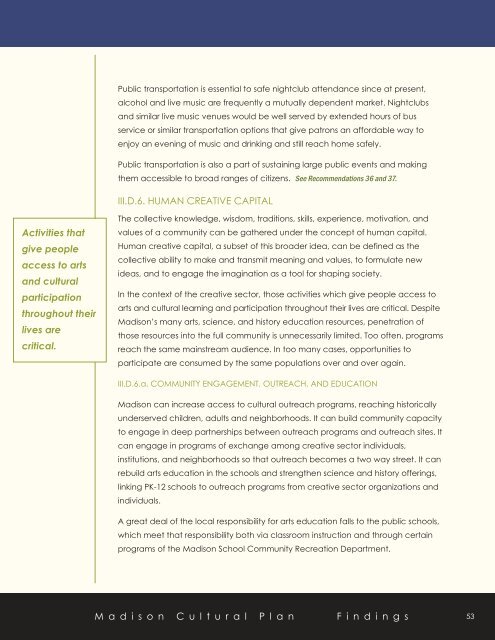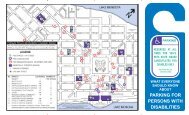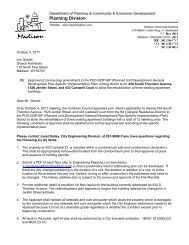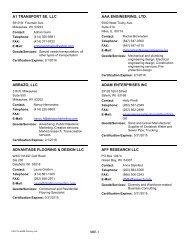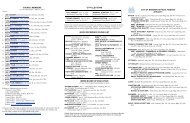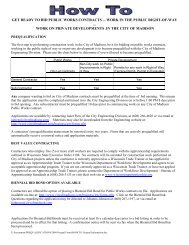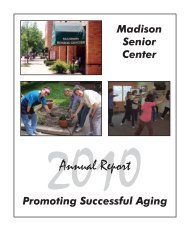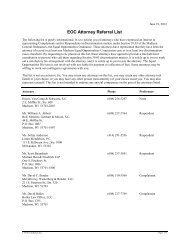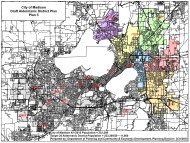Madison Cultural Plan 2011 - City of Madison, Wisconsin
Madison Cultural Plan 2011 - City of Madison, Wisconsin
Madison Cultural Plan 2011 - City of Madison, Wisconsin
Create successful ePaper yourself
Turn your PDF publications into a flip-book with our unique Google optimized e-Paper software.
Activities that<br />
give people<br />
access to arts<br />
and cultural<br />
participation<br />
throughout their<br />
lives are<br />
critical.<br />
Public transportation is essential to safe nightclub attendance since at present,<br />
alcohol and live music are frequently a mutually dependent market. Nightclubs<br />
and similar live music venues would be well served by extended hours <strong>of</strong> bus<br />
service or similar transportation options that give patrons an affordable way to<br />
enjoy an evening <strong>of</strong> music and drinking and still reach home safely.<br />
Public transportation is also a part <strong>of</strong> sustaining large public events and making<br />
them accessible to broad ranges <strong>of</strong> citizens. See Recommendations 36 and 37.<br />
III.D.6. HUMAN CREATIVE CAPITAL<br />
The collective knowledge, wisdom, traditions, skills, experience, motivation, and<br />
values <strong>of</strong> a community can be gathered under the concept <strong>of</strong> human capital.<br />
Human creative capital, a subset <strong>of</strong> this broader idea, can be defined as the<br />
collective ability to make and transmit meaning and values, to formulate new<br />
ideas, and to engage the imagination as a tool for shaping society.<br />
In the context <strong>of</strong> the creative sector, those activities which give people access to<br />
arts and cultural learning and participation throughout their lives are critical. Despite<br />
<strong>Madison</strong>’s many arts, science, and history education resources, penetration <strong>of</strong><br />
those resources into the full community is unnecessarily limited. Too <strong>of</strong>ten, programs<br />
reach the same mainstream audience. In too many cases, opportunities to<br />
participate are consumed by the same populations over and over again.<br />
III.D.6.a. COMMUNITY ENGAGEMENT, OUTREACH, AND EDUCATION<br />
<strong>Madison</strong> can increase access to cultural outreach programs, reaching historically<br />
underserved children, adults and neighborhoods. It can build community capacity<br />
to engage in deep partnerships between outreach programs and outreach sites. It<br />
can engage in programs <strong>of</strong> exchange among creative sector individuals,<br />
institutions, and neighborhoods so that outreach becomes a two way street. It can<br />
rebuild arts education in the schools and strengthen science and history <strong>of</strong>ferings,<br />
linking PK-12 schools to outreach programs from creative sector organizations and<br />
individuals.<br />
A great deal <strong>of</strong> the local responsibility for arts education falls to the public schools,<br />
which meet that responsibility both via classroom instruction and through certain<br />
programs <strong>of</strong> the <strong>Madison</strong> School Community Recreation Department.<br />
<strong>Madison</strong> <strong>Cultural</strong> <strong>Plan</strong> Findings<br />
53


